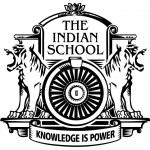Visit to Parliament, class 8.
On 7 September, 2017, the students of class VIII, got an opportunity to go on an excursion to Parliament House. Since the working of Parliament is a part of our curriculum, the excursion proved to be extremely educational and beneficial. It is now easier to relate to the functions of Parliament with reference to the matter in our textbook, which we have studied. It was an educational, fun-filled experience where we got to see the interiors of the Lok Sabha, Rajya Sabha and the Central Hall.
We were told that the maximum strength of the Lower House envisaged by the Constitution is 552, up to 530 members to represent the States, up to 20 members to represent the Union Territories and not more than two members of the Anglo-Indian Community to be nominated by the President, if, in his opinion, the community is not adequately represented in the House. The total elective membership is distributed among the States in a way that the ratio between the number of seats allotted to each State and the population of the State is, so far as practicable, the same for all States. The number is divided among the 28 States and the 7 Union Territories. The Lok Sabha has the most important place in our democracy. It is the basic place where representatives, elected from various parts of our country gather to debate about various concerns. The ruling government declares its plans, schemes for the country, here. The national budget is passed here too. Amendments to laws are also proposed and decided here.
The Rajya Sabha was created to serve as a 'check and balance', as it were, on the directly elected Lok Sabha. Since the latter's members are directly elected, populist compulsions may force them to go against better judgement. The Rajya Sabha serves as a political wall of protection. The bureaucracy is supposed to be another wall.
The Central Hall is a place of historical importance. The Indian Constitution, was framed in the Central Hall and the transfer of power on 15th August, 1947 from British to Indian hands also took place in this great Hall.
The Central Hall was originally used as the Library of the erstwhile Central Legislative Assembly and the Council of States. In 1946, it was converted and refurnished into the Constituent Assembly Hall. The Constituent Assembly met there from December 9, 1946 to January 24, 1950. At present, the Central Hall is used for holding joint sittings of the two Houses. At the commencement of the first session after each general election to the Lok Sabha and at the commencement of the first session of each year, the President addresses both Houses of Parliament assembled together in the Central Hall. When the Houses are in session, the Central Hall is used by members for informal discussions. The Central Hall is also used for special occasions when the Members of Parliament are addressed by distinguished Heads of States of other countries. The Hall is also equipped with a Simultaneous Interpretation System. Overlooking the dais in the centre of the Central Hall hangs a portrait of Mahatma Gandhi painted by Sir Oswald Birley and donated to the nation by Shri A.P. Pattani, Member of the Constituent Assembly of India.
We are indeed privileged to have been granted this rare chance.
Samara Ravish and Soumi Lahri, VIII-C













